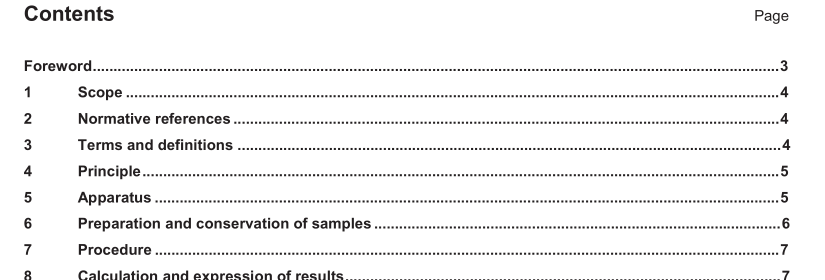EN 13587:2010 – Bitumen and bituminous binders – Determination of the tensile properties of bituminous binders by the tensile test method

1 Scope
This European Standard specifies a method for determining the tensile properties of a bituminous binder, in particular those of a polymer modified bitumen, by means of a tensile test.
NOTE The tensile properties, more particularly the tensile stress, the elongation and energy, at the yield point and on fracture, are customarily used as a criterion for assessing the quality of these materials.
WARNING — The use of this European Standard may involve hazardous materials, operations and equipment. This European Standard does not purport to address all of the safety problems associated with its use. It is the responsibility of the user of this European Standard to establish appropriate safety and health practices and determine the applicability of regulatory limitations prior to use.
2 Normative references
The following referenced documents are indispensable for the application of this document. For dated references,only the edition cited applies. For undated references, the latest edition of the referenced document (including any amendments) applies.
EN 58, Bitumen and bituminous binders — Sampling bituminous binders
EN 12594, Bitumen and bituminous binders — Preparation of test samples
EN 13703, Bitumen and bituminous binders — Determination of deformation energy
EN ISO 527 (all parts), Plastics — Determination of tensile properties
ISO 5893, Rubber and plastics test equipment — Tensile, flexural and compression types (constant rate of traverse) — Specification
3 Terms and definitions
For the purposes of this document, the following terms and definitions apply.
3.1
tensile force
force undergone by a specimen subjected to extension
NOTE The unit is expressed in Newton (N).
3.2
tensile stress
ratio of the tensile force per unit area of the original cross-section
NOTE The unit is expressed in Newton per square meter (N/m²).
3.3
elongation
increase in length of a specimen, expressed in metres
NOTE Elongation is also expressed in % from the initial length. It is calculated as [(new length – initial length)/initial length]x 100.
3.4
brittle break
rupture happening at the beginning of the test before the flowing threshold when the stress-strain curve is still linear
3.5
flowing threshold
maximum of the stress-strain curve
4 Principle
A specimen, held by its ends between two jaws, is extended in a chamber, regulated at the test temperature, at constant speed until fracture or a given percent elongation is achieved. In general, stress and percent elongation are noted at the flowing threshold, at breaking and at a percent elongation of 400 %.
5 Apparatus
Usual laboratory equipment and glassware, together with the following:
5.1 Test machine, in accordance with ISO 5893.
5.1.1 The machine shall be capable of maintaining a constant speed of the moving element at the speed chosen for the test to an accuracy of within 2 % of the chosen speed.
5.1.2 The specimen attachment device (located on the stationary part and on the moving part) shall:
ensure sufficient clamping of the specimen heads throughout the entire test, to prevent slipping;
not exert, on any part of the ends of the specimen, localized stresses liable to cause tearing or fracture of the specimen.
5.1.3 Appropriate facilities shall permit the following measurements to be made:
tensile force applied on the specimen over the range 1 N to 500 N to an accuracy of ± 1 %;
EN 13587:2010 – Bitumen and bituminous binders – Determination of the tensile properties of bituminous binders by the tensile test method